Top 17 Golang Web Frameworks

Insights
As web development continues to grow, the demand for fast and efficient web applications increases. Go, or Golang, has become a preferred programming language due to its simplicity, performance, and strong concurrency support. It allows developers to build scalable web applications with minimal overhead. In this article, we will compare the top 17 Golang web frameworks and analyze their strengths and use cases to help you choose the best one for your project.
06 Feb 2025
As web development continues to grow, the demand for fast and efficient web applications increases. Go, or Golang, has become a preferred programming language due to its simplicity, performance, and strong concurrency support. It allows developers to build scalable web applications with minimal overhead.
In this article, we will compare the top 17 Golang web frameworks and analyze their strengths and use cases to help you choose the best one for your project.
Brief on Golang
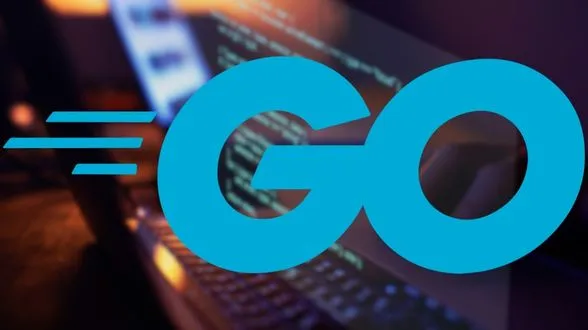
Go is an open-source programming language developed by Google in 2007. It was designed to address limitations in existing languages, such as slow compilation, complex syntax, and poor concurrency handling. Go offers a concise syntax with a small set of keywords, making it easy to learn. Its built-in concurrency support allows developers to create high-performance applications with minimal effort. Since its release, Go has gained traction in web development, cloud computing, and microservices due to its efficiency and reliability.
Go compiles to machine code, resulting in fast execution speeds. Unlike interpreted languages, Go does not rely on a virtual machine, reducing runtime overhead. It also features garbage collection, ensuring efficient memory management without slowing down performance. These characteristics make Go an ideal choice for building web applications that require speed and scalability.
What are Golang Web Frameworks?
A web framework is a collection of libraries, tools, and components that simplify web application development. It provides pre-built functionalities such as routing, middleware support, template rendering, and database interaction. Golang web frameworks enable developers to build web applications more efficiently by eliminating the need to write repetitive code from scratch.
Golang web frameworks can be classified into full-stack frameworks and micro-frameworks. Full-stack frameworks provide everything needed for large-scale application development, including built-in authentication, ORM (Object-Relational Mapping), and templating engines. Micro-frameworks, on the other hand, offer minimal features, giving developers more control over architecture and dependencies. Choosing the right framework depends on factors such as project complexity, performance requirements, and ease of use.
Why Use a Golang Web Framework?
While Go allows developers to build web applications without a framework, using one can streamline development. Web frameworks handle common tasks such as routing, session management, and request handling, reducing development time. They also provide well-structured code patterns, improving maintainability.
In the past, developers relied on traditional software development approaches that required writing boilerplate code. The introduction of Golang web frameworks changed this by automating essential functionalities, allowing developers to focus on business logic. Today, frameworks are crucial for building scalable web applications efficiently.
Advantages of Golang Web Frameworks
Using a Golang web framework provides several benefits, making development faster and more efficient. Below are key advantages:
- High Performance: Go is known for its speed. Compiled to machine code, it outperforms interpreted languages such as Python and PHP. This results in faster request handling and lower latency, making it suitable for high-performance web applications.
- Garbage Collection: Go’s automatic garbage collection optimizes memory management, preventing memory leaks and reducing manual cleanup efforts. This feature ensures stable application performance, even under heavy workloads.
- Extensive Library Support: Go offers a rich standard library with built-in support for HTTP handling, JSON processing, and cryptographic functions. Many Golang web frameworks extend this functionality, providing additional tools for developers.
- Static Typing: Go enforces static typing, catching errors at compile time instead of runtime. This improves code reliability, reducing the risk of unexpected crashes in production environments.
- Concurrency Support: Go’s goroutines allow efficient parallel execution, enabling applications to handle thousands of requests simultaneously. This makes Golang web frameworks ideal for high-traffic applications and microservices.
- Easy-to-Read Syntax: Go’s straightforward syntax simplifies code maintenance. Developers can quickly understand and modify existing codebases, reducing development time and onboarding efforts for new team members.
- Interface-Based Design: Go’s interface system promotes flexible and reusable code. This allows developers to build modular applications, improving scalability and adaptability to changing project requirements.
- Comprehensive Testing Tools: Go includes a built-in testing framework, allowing developers to write unit tests and benchmark applications efficiently. This ensures application reliability and helps catch potential issues early in the development cycle.
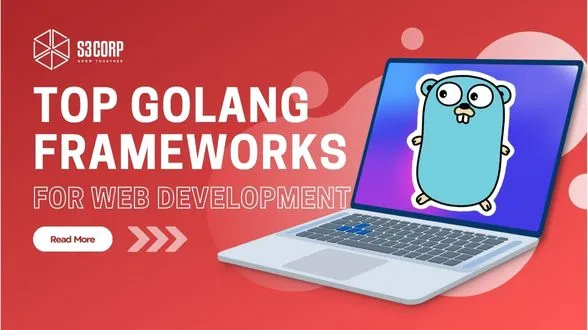
Top Go Web Frameworks in 2025
Go (Golang) has become one of the most popular programming languages for building high-performance, scalable, and efficient web applications. As we look ahead to 2025, several Go web frameworks stand out for their performance, feature sets, and community support. Below is a comprehensive overview of the top Go web frameworks that are likely to dominate the ecosystem in 2025.
Gin/Gin-Gonic
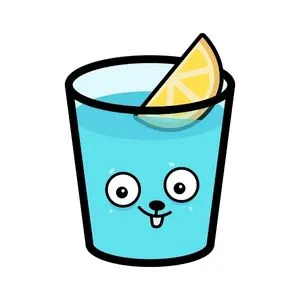
Gin is one of the fastest Go frameworks, performing up to 40 times faster than Martini. Its efficiency makes it a strong choice for building high-performance websites and APIs. Designed for speed and simplicity, Gin offers a lightweight yet powerful solution for developers looking to build scalable applications with minimal setup. It supports middleware, allowing developers to enhance functionality without complicating the core code. Due to its design, Gin is widely adopted for microservices and API development.
Gin provides a well-structured feature set:
- Routing: Offers a simple and flexible routing system, allowing developers to define URL paths easily. It supports parameters and wildcards, enabling dynamic route creation.
- Middleware: Supports modular middleware functions that can be integrated seamlessly into the request pipeline. This feature helps developers add functionalities like authentication, logging, and request modification.
- Request Binding: Connects request data directly to Go structures, simplifying data handling. This eliminates the need for manual parsing and ensures data consistency.
- JSON Validation: Automatically validates JSON data to ensure it meets predefined requirements. This feature is essential for API development, where data integrity is critical.
- Error Management: Provides straightforward error handling, allowing developers to manage errors efficiently with well-structured responses.
Gin is highly scalable and can handle a large number of simultaneous requests, making it ideal for high-traffic websites and large applications. It benefits from a large and active community, which contributes to extensive documentation, tutorials, and code examples. Developers can find ample resources to troubleshoot issues and optimize their applications.
Beego

Beego is a high-performance Go framework that excels in enterprise-level application development. It provides an all-in-one solution, integrating various features that simplify complex application building. With a structured and modular approach, Beego supports developers in creating scalable and maintainable applications.
Beego's extensive feature set includes:
- MVC Architecture: Implements a Model-View-Controller design pattern, making it easier to organize and manage code. This separation improves maintainability and scalability.
- ORM Support: Comes with a built-in Object-Relational Mapping (ORM) system, which simplifies database interactions. Developers can use it to perform database operations without writing complex SQL queries.
- Context Handling: Manages HTTP requests and responses efficiently, allowing seamless communication between clients and the server.
- Routing: Supports efficient path definition with namespace routing, enabling better organization of application endpoints.
- Middleware: Allows additional functionalities to be plugged into the request pipeline, such as authentication, logging, and caching.
- Caching: Includes built-in caching mechanisms that improve website performance by reducing database queries and storing frequently accessed data.
Beego is designed for large-scale applications, making it a strong choice for businesses that require stable and high-performing enterprise solutions. It has an active community that contributes to its documentation, tutorials, and example projects, ensuring developers can implement best practices effectively.
Echo
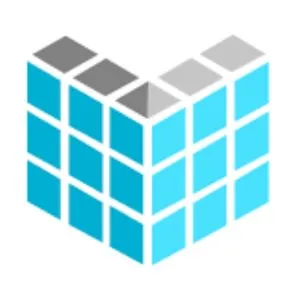
Echo is a fast and minimalist Go framework designed for rapid development. It focuses on high performance, making it an excellent choice for building fast websites, RESTful APIs, and microservices. With its simple syntax and optimized request handling, Echo allows developers to create efficient applications with minimal resource usage.
Echo offers a comprehensive set of features:
- Data Binding: Automatically connects request data to Go structures, streamlining data management and reducing manual parsing efforts.
- Data Rendering: Supports multiple response formats, including JSON, XML, and others, ensuring compatibility with different client applications.
- HTTP/2 Support: Leverages HTTP/2 for faster communication and better user experience. This leads to reduced latency and improved performance.
- Middleware: Supports both custom and built-in middleware options, enabling developers to extend functionality without altering core logic. Common use cases include security, logging, and authentication.
- Router Optimization: Implements an optimized router that efficiently handles incoming requests with minimal overhead. This results in faster response times and improved server efficiency.
Echo is highly scalable and well-suited for cloud deployment, making it a good fit for applications that need to grow over time. It has an active and expanding community that provides solid documentation and forum support, ensuring developers can access the help they need.
Fiber
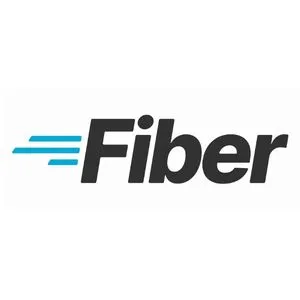
Fiber is a high-performance web framework built on top of fasthttp, making it one of the fastest Go frameworks available. It is heavily inspired by Express.js, a popular Node.js framework, making it familiar to developers transitioning from JavaScript to Go. Fiber is optimized for speed and low resource consumption, making it an excellent choice for building modern web applications, APIs, and microservices.
Fiber provides a robust set of features:
- Express-like API: Offers a syntax similar to Express.js, making it easier for developers with a Node.js background to adopt. This reduces the learning curve and speeds up development.
- Routing: Implements an efficient routing system that supports dynamic routes and route grouping. This enables developers to create well-structured applications.
- Middleware: Allows developers to extend functionality with modular middleware components. It supports both built-in and custom middleware solutions.
- Static File Serving: Enables the efficient serving of static files, such as images, CSS, and JavaScript, reducing server load and improving performance.
- WebSocket Support: Provides built-in WebSocket functionality, making it suitable for real-time applications such as chat systems and live data feeds.
Fiber is designed to handle high traffic with minimal latency, making it ideal for applications that require quick response times. Its growing community contributes to comprehensive documentation and example projects, helping developers quickly integrate and optimize their applications.
Revel
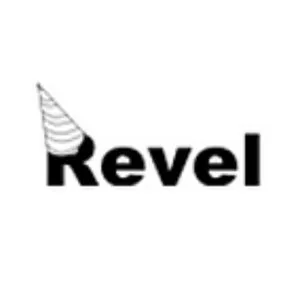
Revel is a full-stack web framework inspired by Ruby on Rails and Play Framework. It is designed to provide a fast development cycle, making it easy to build and maintain web applications. Its structure and built-in features simplify development by offering a robust foundation for web applications. Developers can work efficiently with its automatic code reloading and quick update reflection, which reduces downtime during development.
Revel is known for its speed and ease of use. It enables rapid development by allowing changes to be reflected almost instantly. This eliminates the need to restart the application manually, improving workflow efficiency. The framework is designed to handle high-performance applications with minimal latency.
Feature Set
- MVC Structure: Organizes application code into three distinct layers—Model, View, and Controller—ensuring separation of concerns and making maintenance easier.
- Path Handling: Manages website addresses efficiently, ensuring smooth routing and navigation.
- Built-in Tools: Provides essential tools for managing user sessions, data validation, and form handling, reducing the need for third-party dependencies.
- Quick Code Updates: Changes in code are reflected in real time, allowing developers to test modifications instantly.
- Hot Reloading: Automatically detects and applies updates, rebuilding and restarting the application as needed to streamline development.
Revel supports the development of large-scale web applications by providing a structured framework that can handle increasing complexity. The built-in tools and well-organized architecture enable developers to scale applications without significant overhead.
The Revel community continues to grow, offering documentation, guides, and examples. Developers can find solutions to common issues through community discussions, ensuring they can effectively utilize the framework’s features.
Kit
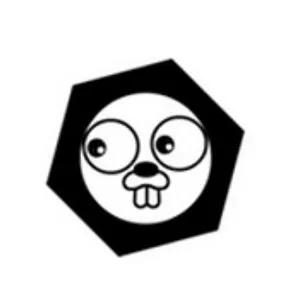
Kit is a toolkit designed specifically for building microservices in Go. Unlike traditional web frameworks, Kit provides a collection of packages that help developers create scalable and maintainable service-oriented architectures. It emphasizes best practices for designing microservices that are efficient and reliable.
Kit is optimized for speed and efficiency, making it an excellent choice for microservices. It is designed to handle high-throughput environments, ensuring that services remain responsive under heavy loads.
Feature Set
- RPC Safety: Ensures secure and reliable remote procedure calls, preventing failures in communication between services.
- System Watching: Continuously monitors system performance, helping developers identify and resolve issues before they impact users.
- Works with Other Tools: Seamlessly integrates with existing tools and frameworks, allowing developers to build on their existing infrastructure.
- Service Design: Supports the development of complex, multi-component systems, making it easier to manage large-scale architectures.
Kit is designed for large-scale applications that require multiple interconnected services. Its modular approach allows developers to add new services without affecting existing ones, ensuring smooth scalability.
Kit has an active developer community that provides documentation, code examples, and best practices. Developers can leverage these resources to implement microservices efficiently and effectively.
Buffalo

Buffalo is a Go web development framework that simplifies the process of building web applications. It provides a complete set of tools for both frontend and backend development, including Webpack integration, database migrations, and an automatic development environment. Buffalo’s all-in-one approach helps developers get started quickly without configuring multiple tools separately.
Buffalo is optimized for quick development, reducing the time required to set up and deploy applications. The framework minimizes overhead, allowing developers to focus on building features rather than managing infrastructure.
Feature Set
- Toolkit: Offers a comprehensive set of tools for building various parts of an application, reducing the need for external dependencies.
- Webpack Setup: Simplifies frontend development by handling asset bundling and optimization, ensuring smooth integration with modern JavaScript frameworks.
- Dev Command: Automatically updates the application as developers make changes, eliminating the need for manual restarts.
- Database Support: Works seamlessly with popular databases such as MySQL, PostgreSQL, and SQLite, allowing developers to choose the best database for their needs.
- Gorilla Toolkit: Provides robust support for routing, session management, and cookies, making it easier to handle user authentication and data persistence.
- Test Suites: Includes built-in testing tools to ensure application stability and reliability before deployment.
Buffalo is suitable for both frontend and backend development, making it a flexible choice for web applications. Its modular structure allows developers to scale applications as needed without extensive reconfiguration.
Buffalo has a small but dedicated community that actively contributes to its development. Developers can find well-documented guides and resources to help them use Buffalo effectively.
Iris
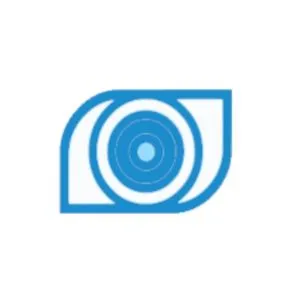
Iris is a high-performance, lightweight web framework for Go. It is known for its flexibility and compatibility with third-party libraries, making it a popular choice among developers who require a customizable framework. Iris provides essential features such as session management, API versioning, and WebSocket support, ensuring developers can build powerful applications efficiently.
Iris is designed to be fast and simple, offering minimal overhead while providing essential functionalities. It is optimized for handling high loads with low latency, making it ideal for applications that require real-time performance.
Feature Set
- Sessions, API Versioning, WebSocket: Offers essential features for modern web applications, including session management, structured API development, and real-time communication.
- Dependency Injection: Allows seamless integration with third-party libraries, giving developers greater flexibility in structuring their applications.
- MVC Architecture: Supports scalable development by organizing code into models, views, and controllers, ensuring clean and maintainable code.
- Smart Compression: Improves performance by efficiently compressing data, reducing response times, and optimizing bandwidth usage.
Iris is built to handle large applications efficiently. Its flexible architecture allows developers to extend and customize the framework as applications grow in complexity.
Iris has an active community that provides quick issue resolution and continuous updates. Developers can rely on extensive documentation and community support to implement best practices.
Go-Zero
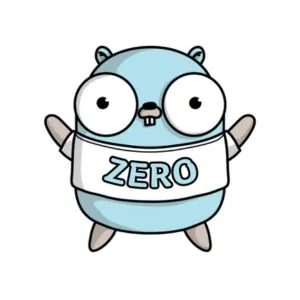
Go-Zero is a framework built for scalable and high-performance services. It is designed to handle high-traffic applications while ensuring system stability. The framework follows best engineering practices, making it a reliable choice for developers who need to build large-scale services without compromising performance.
Go-Zero prioritizes stability and efficiency, making it suitable for services that experience heavy traffic. Its architecture minimizes bottlenecks, allowing applications to handle millions of users without slowdowns. By optimizing system resources, it ensures consistent response times even under peak loads.
Feature Set
- API Description Syntax: Go-Zero offers a simple API description syntax that helps developers define endpoints quickly. This reduces development time and ensures consistency across services.
- Code Generation Tool: Developers can use Go-Zero's built-in code generation tool to convert .api files into working code across multiple languages. This eliminates repetitive coding tasks and maintains uniformity.
- Concurrency Control and Rate Limits: Unlike many other frameworks that require additional configuration, Go-Zero has built-in concurrency control and rate limiting. These features prevent system overload and ensure efficient request handling.
Go-Zero is designed for large-scale applications. Its architecture allows services to scale horizontally, making it a strong choice for businesses handling millions of users. The framework supports distributed systems, ensuring that applications remain responsive as demand grows.
The Go-Zero community is expanding, and developers have access to well-documented resources. Whether users need guidance on setup or advanced configurations, the documentation provides clear instructions. Additionally, the growing community ensures continued improvements and new features.
Kratos
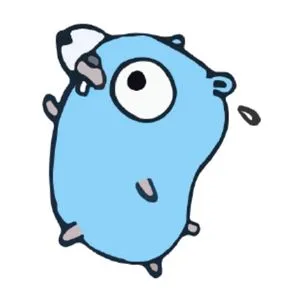
Kratos is a Go-based framework designed for microservices. It provides essential tools for building scalable and efficient web applications. By addressing common challenges in distributed systems, Kratos simplifies the development process while maintaining high performance.
Kratos is optimized for microservices, ensuring that applications remain efficient and accessible. The framework eliminates unnecessary overhead, making it ideal for modern cloud-based architectures. It provides built-in solutions for common microservices challenges, ensuring reliability in production environments.
Feature Set
- Tools for Development: Kratos offers a complete set of tools for building web applications from scratch. It includes built-in service discovery, logging, and monitoring tools, reducing the need for external dependencies.
- Efficiency Enhancement: The framework minimizes common pitfalls in distributed systems, such as latency issues and service communication failures. It streamlines inter-service communication, improving application stability.
Kratos is designed for large-scale systems. Its microservices architecture allows applications to grow efficiently. Developers can manage multiple services without experiencing performance degradation, making it a strong choice for cloud-native applications.
Kratos has an active and helpful community. The framework is backed by extensive instructional resources, allowing developers to get started quickly. The documentation covers everything from basic setup to advanced configurations, making it easier for teams to implement best practices.
Gorilla
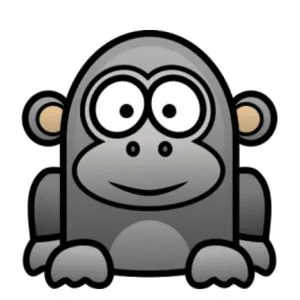
Gorilla is a collection of reusable components that simplify web application development in Go. It provides flexible and efficient tools for building HTTP-based applications.
Gorilla is known for its reliability. It includes well-tested components that improve application performance. The framework allows developers to build scalable web applications without introducing unnecessary complexity.
Feature Set
- Dependency Injection (DI) and Testing: Gorilla offers built-in support for dependency injection, making applications more modular. It also includes testing utilities, allowing developers to write maintainable and well-structured code.
- Convention Over Configuration: The framework follows a convention-based approach, simplifying development by reducing the need for manual configurations. This makes it easier for developers to focus on building features rather than handling boilerplate setup.
- Routing: Gorilla’s mux package is a powerful router that efficiently handles URL paths. It supports dynamic path parameters, making it suitable for applications with complex routing requirements.
- WebSocket Support: Real-time communication is a key feature of modern web applications, and Gorilla provides built-in WebSocket support. This allows developers to create interactive applications with live updates.
- Middleware: The framework includes middleware support, enabling developers to extend request handling with additional functionalities such as authentication, logging, and request modifications.
Gorilla follows a modular approach, allowing developers to use only the components they need. This ensures scalability by keeping applications lightweight while maintaining flexibility. The framework is suitable for both small projects and large enterprise applications.
Gorilla has an active developer community and comprehensive documentation. The framework has been widely adopted, and users can find extensive guides and third-party contributions that enhance its capabilities.
Mux/HttpRouter
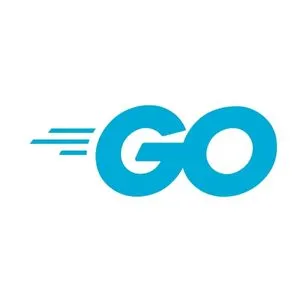
Mux/HttpRouter is a high-performance HTTP router for Go. It is designed to be lightweight while offering powerful routing capabilities.
Mux/HttpRouter is optimized for speed and minimal memory usage. It is an excellent choice for developers who need a fast and efficient routing solution. The framework processes requests quickly, making it ideal for applications that require high throughput.
Feature Set
- Path Auto-Correction: The router supports automatic path correction, ensuring that minor URL mismatches do not result in errors. This improves user experience by handling common routing mistakes.
- Zero Garbage: The framework is optimized to generate zero garbage, reducing unnecessary memory allocations. This leads to lower latency and improved application performance.
Mux/HttpRouter is designed for applications with complex routing requirements. It efficiently handles long URL paths and a large number of routes, making it ideal for large-scale web applications.
Mux/HttpRouter has a dedicated user base. The documentation is well-maintained, and developers can find support through community forums and open-source contributions. The framework continues to receive updates, ensuring compatibility with modern Go applications.
Martini
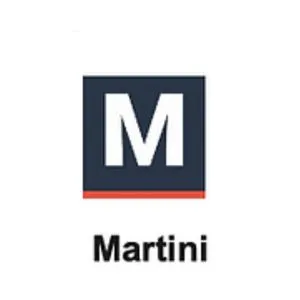
Martini is a lightweight Go framework inspired by Sinatra, a popular Ruby framework. It is known for its simplicity and ease of use. Martini provides built-in support for middleware, making it easy to extend functionality without modifying core components. The framework allows developers to build web applications quickly while maintaining flexibility. It integrates seamlessly with third-party libraries, giving developers more control over application features.
Martini is efficient and optimized for speed. It is particularly effective for handling requests with minimal overhead, making it suitable for API development. While it is not as fast as some newer Go frameworks, its simplicity and modular approach make it a strong choice for developers looking for a balance between performance and usability.
Feature Set
- Gorm Integration: Martini includes built-in support for Gorm, a powerful database toolkit for Go. This integration simplifies database management, allowing developers to perform CRUD operations with ease.
- Middleware Support: The framework supports various middleware functions, enabling developers to add authentication, logging, and other functionalities effortlessly.
- Multi-language Support: Martini works well with other Go libraries, making it adaptable to various project needs.
The framework is designed to handle high-availability APIs. While it may not be the best option for extremely high-traffic applications, it remains a viable choice for projects requiring moderate scalability.
The Martini community is small but active. Developers can find documentation, libraries, and community-driven extensions to enhance the framework’s capabilities.
Gocraft
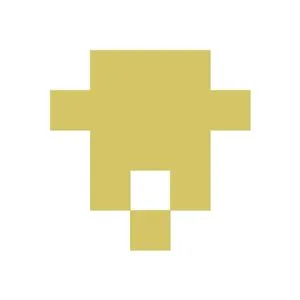
Gocraft is a high-performance Go framework that provides fast routing and built-in middleware. It is designed for developers who need a framework that balances speed, flexibility, and scalability. Gocraft offers a simple approach to web development while providing powerful features that make it suitable for both small and large applications.
Performance is a key strength of Gocraft. The framework features optimized routing, reducing request processing time. This makes it a great choice for building APIs, web services, and applications that require quick response times. The framework also includes native middleware support, allowing developers to extend functionality without compromising performance.
Feature Set
- Built-in Middleware: Gocraft offers a structured way to add extra functionalities such as request handling, logging, and authentication. Developers can create and use custom middleware efficiently.
- Routing System: The routing mechanism in Gocraft is optimized for performance, ensuring fast request handling and efficient path resolution.
The framework is designed for high-performance web applications, making it an excellent option for projects requiring high traffic capacity. It efficiently handles concurrent requests while maintaining stability.
Gocraft is beginner-friendly and has an active developer community. Documentation is available, making it easier for new users to get started.
Goji
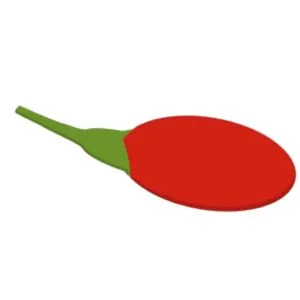
Goji is a minimalist Go framework that focuses on simplicity and speed. It is lightweight, making it an excellent choice for developers who want to build fast and efficient web applications. Goji provides middleware support and an optimized routing system, ensuring smooth request handling.
Performance is one of Goji’s strongest aspects. The framework is built for speed, allowing applications to handle requests efficiently. Its routing system is designed to be fast and reliable, making it an excellent choice for building APIs and microservices. The framework also emphasizes flexibility, enabling developers to integrate external packages easily.
Feature Set
- Auto-configuration & Dependency Injection: Goji simplifies code management by providing automatic configuration and dependency injection, reducing boilerplate code.
- Middleware Support: The framework allows developers to implement middleware functions, extending application features with minimal effort.
Goji is designed for applications of various sizes. It performs well in small projects and can scale efficiently for larger platforms.
Goji has an active community with comprehensive documentation. Developers can find support and resources to enhance their projects.
Web.go
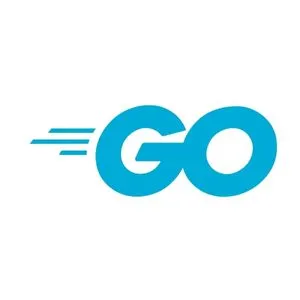
Web.go is a minimalist web framework for Go, focusing on simplicity and ease of use. It is ideal for developers who want to build lightweight applications without unnecessary complexity. The framework provides an intuitive structure, making it easy to set up and deploy web applications.
Web.go is optimized for speed and minimal resource consumption. It offers a streamlined approach to request handling, reducing overhead and improving response times. The framework is well-suited for small to medium-sized web applications and mobile web platforms.
Feature Set
- Tree Routing System: Web.go features a tree-based routing mechanism, allowing for efficient request handling and easy application structuring. This system makes it easier to manage routes and optimize request resolution.
The framework is suitable for mobile web applications and lightweight web services. While it may not be the best choice for high-traffic platforms, it performs well in environments where simplicity and efficiency are priorities.
Web.go has a small but supportive community. Developers can find essential documentation and community-driven resources to assist with development.
Mango
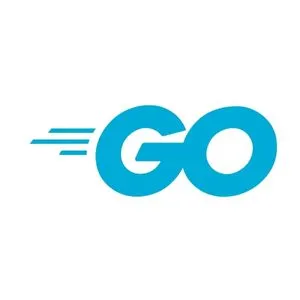
Mango is a modular web framework for Go, emphasizing reusability and efficiency. It is built with a focus on reusable components, making it an excellent choice for developers looking to create modular applications. Mango provides a flexible structure, enabling developers to build applications with minimal effort while maintaining high performance.
Mango is designed to be fast and responsive. It provides efficient request handling, making it a good choice for applications that require rapid data processing. The framework is particularly useful for developers who need a structured and reusable approach to web development.
Feature Set
- Middleware and Applications: Mango supports a functional programming style, allowing developers to create self-contained middleware and applications. This approach improves modularity and reusability, making code easier to maintain.
Mango can handle multiple users simultaneously, making it a suitable choice for web applications that require concurrent request processing.
The framework has an active community with comprehensive documentation, ensuring that developers have access to the resources they need.
Comparing Go Frameworks
Choosing the right Go framework can be challenging. To simplify the decision, the table below compares 17 frameworks based on key features and performance metrics. This structured comparison allows for a data-driven evaluation, helping you identify the framework that best fits your needs.
Framework | Primary Focus | Performance | Learning Curve | Scalability | Key Features | Community | Use Cases |
Gin | Speed & Simplicity | Very High | Easy | High | Routing, Middleware, Request Binding, JSON Validation, Error Management | Large & Active | Microservices, APIs, High-Performance Websites |
Echo | Speed & Minimalism | Very High | Easy | High | Data Binding, HTTP/2, Router Optimization, Middleware, Data Rendering | Active & Expanding | Websites, APIs, Microservices |
Beego | Enterprise Applications | High | Moderate | Very High | MVC, ORM, Caching, Context Handling, Routing, Middleware | Active | Enterprise Applications, Large-Scale Systems |
Fiber | Speed & Familiarity | Very High | Easy | High | Express-like API, Routing, WebSocket Support, Static File Serving, Middleware | Growing | Web Apps, APIs, Microservices |
Revel | Full-Stack Development | High | Moderate | Very High | MVC, Hot Reloading, Built-in Tools, Path Handling, Quick Code Updates | Growing | Web Applications |
Kit | Microservices | Very High | Moderate | Very High | RPC Safety, System Watching, Service Design, Works with Other Tools | Active | Microservices, Distributed Systems |
Buffalo | Full-Stack Dev. | High | Easy | High | Webpack, DB Support, Gorilla Toolkit, Testing, Dev Command | Small & Dedicated | Web Applications |
Iris | Flexibility & Customization | High | Moderate | High | Sessions, API Versioning, WebSocket, Dependency Injection, MVC, Compression | Active | Large Applications |
Go-Zero | Scalable Services | Very High | Moderate | Very High | API Description, Code Generation, Concurrency Control, Rate Limits | Expanding | High-Traffic Services, Distributed Systems |
Kratos | Microservices | Very High | Moderate | Very High | Service Discovery, Logging, Monitoring, Efficiency Enhancement, Dev Tools | Active & Helpful | Cloud-Native Apps, Microservices |
Gorilla | Web Components | High | Easy | High | DI, Testing, Routing, WebSocket, Middleware | Active & Comprehensive | Web Applications |
Mux/ HttpRouter | HTTP Routing | Very High | Easy | High | Path Auto-Correction, Zero Garbage | Dedicated | Large-Scale Apps, Complex Routing |
Martini | Simplicity & Ease of Use | Moderate | Easy | Moderate | GORM Integration, Middleware Support, Multi-language Support | Small & Active | High-Availability APIs |
Gocraft | Speed & Middleware | Very High | Easy | High | Built-in Middleware, Routing System | Active | High-Performance Apps, APIs, Web Services |
Goji | Simplicity & Speed | Very High | Easy | High | Auto-config, DI, Middleware Support | Active & Comprehensive | APIs, Microservices, Small to Large Projects |
Web.go | Simplicity & Ease of Use | Moderate | Easy | Moderate | Tree Routing System | Small & Supportive | Mobile Web, Lightweight Applications |
Mango | Modularity & Efficiency | High | Moderate | High | Middleware, Applications, Functional Programming Style | Active & Comprehensive | Modular Applications, Concurrent Processing |
How To Picking the Right Go Web Framework
Choosing the right Go web framework depends on your project’s needs. Each framework offers different advantages. Some focus on speed, while others provide flexibility or scalability. Understanding these differences helps you make the best choice.
Performance and Speed
If speed is your top priority, Gin and Fiber are strong options. These frameworks handle requests quickly, making them ideal for high-traffic applications. Gin is lightweight and uses fast routing, making it one of the most efficient frameworks. Fiber is built on FastHTTP, providing a fast and easy-to-use framework with additional features. These frameworks work well for applications where response time is critical, such as real-time applications or APIs handling thousands of requests per second.
Flexibility and Customization
For projects requiring frequent modifications, Echo and Beego are good choices. Echo is a minimalist framework that allows developers to add only the necessary features. This keeps applications lightweight while maintaining flexibility. Beego includes built-in modules for logging, configuration, and task scheduling. It helps developers build applications faster without relying on third-party tools. These frameworks are useful when projects need frequent updates or custom features.
Scalability for Large Applications
If your project needs to grow over time, Kit, Revel, and Buffalo support scalability. Kit follows a modular architecture, making it easy to break applications into smaller, manageable components. Revel offers a full-featured environment with built-in features like code reloading and testing tools. Buffalo simplifies development by including everything needed for building large applications. These frameworks work well for applications expected to expand with more users and features.
Ease of Use
Developers looking for a simple setup can consider Fiber. Fiber has a syntax similar to Express.js, making it easier for developers familiar with JavaScript frameworks. This framework are useful for beginners or developers who want to get started quickly without learning a complex framework.
Built-in Tools and Features
If a framework with built-in tools is important, Gin, Echo, and Beego provide useful features. Gin offers middleware support, logging, and error handling. Echo has built-in security features and request validation. Beego includes ORM, caching, and task scheduling. These frameworks reduce development time by providing essential tools out of the box.
Choosing the Best Framework
Each framework has unique strengths. If speed matters most, Gin, FastHTTP, or Fiber are good options. If you need flexibility, Echo or Beego provide customizable features. For large applications, Kit, Revel, or Buffalo support scalability. If ease of use is a priority, Fiber and FastHTTP simplify development. For projects that benefit from built-in tools, Gin, Echo, and Beego offer useful features.
As we move into 2025, Go web frameworks like Gin, Fiber, and Echo are expected to dominate due to their performance, scalability, and active communities. However, newer frameworks like Go-zero and Kratos are also gaining traction, especially for microservices and large-scale applications.
Again, selecting the right framework depends on what your project requires. Understanding the strengths of each framework will ensure you pick the right one for your project.
Conclusion
This guide has covered 17 widely used Go web frameworks, including Gin, Echo, Beego, Fiber, Revel, Kit, Buffalo, Iris, Go-Zero, Kratos, Gorilla, Mux/HttpRouter, Martini, Gocraft, Goji, Web.go, and Mango. Each of these frameworks serves different purposes, offering various features, performance capabilities, and community support levels. This list is not definitive, as many other Go web frameworks exist. The right choice depends on the specific needs of a project, such as performance, scalability, ease of use, and available third-party integrations.
When selecting a Go web framework, developers should evaluate factors like simplicity, documentation quality, ecosystem maturity, and long-term maintainability. Some frameworks, like Gin and Fiber, prioritize speed, making them ideal for high-performance applications. Others, such as Beego and Buffalo, offer built-in features for rapid development. Meanwhile, frameworks like Kratos and Kit are suited for microservices due to their modularity and structured approach. The final decision should align with the project's goals, team expertise, and expected scalability requirements.
Business owners and product managers who are unfamiliar with Golang web frameworks may struggle to determine the best option for their projects. Since the right choice can affect performance, security, and development speed, consulting a Golang development company can provide clarity. These companies have experienced engineers who understand project requirements and can recommend frameworks that align with business goals.
S3Corp. is an example of a company specializing in Golang development. We provide software development services such as web application development, backend development, microservices architecture, and performance optimization. We help businesses build scalable applications using Go frameworks suited to your specific use cases. Instead of navigating the decision-making process alone, businesses can benefit from expert guidance, saving time and resources while ensuring high-quality development.
FAQs on Go Web Frameworks
What framework works best with Golang?
The best framework depends on project requirements. Gin and Beego are highly efficient and have strong community support. Gin is known for its speed and minimalism, making it ideal for performance-critical applications. Beego, on the other hand, provides an integrated structure similar to Django, making it useful for developers who want built-in ORM, caching, and task scheduling.
Best Golang framework for microservices?
Echo, Kit, and Kratos are strong choices for microservices development. Echo is a lightweight framework optimized for high-performance API development. Kit provides modular tools for building scalable and maintainable services, following best practices for distributed systems. Kratos is designed for large-scale applications, offering features like service discovery, dependency injection, and built-in observability.
What is the most popular Go framework?
Gin is the most popular Go web framework, with over 75,000 GitHub stars. Its speed, simplicity, and middleware support make it a preferred choice for developers building APIs and web applications. The framework's active development and extensive documentation further contribute to its widespread adoption.
Should you use a Go framework?
Using a framework is not mandatory, but it simplifies development by providing essential features like routing, middleware management, and request handling. Developers who prefer full control over their applications may opt for standard Go libraries, but frameworks accelerate development by reducing boilerplate code. The choice depends on project complexity and developer preferences.


_1746790910898.webp?w=384&q=75)
_1746790956049.webp?w=384&q=75)
_1746790970871.webp?w=384&q=75)


